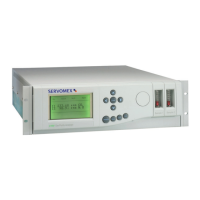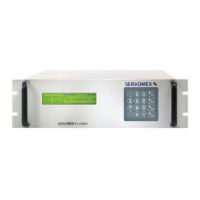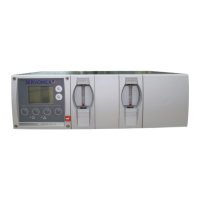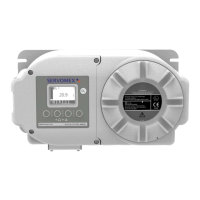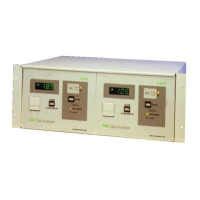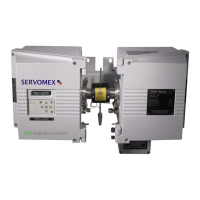4.2
Note: the following presumes that background gases, in the typical sample stream, will have
no effect on the sensor readings. If this is not the case, calibration gases should be modified
accordingly.
4.2.1 Gfx transducer low and high calibration
The low calibration gas for Gfx gas sensor modules may be specified between -5vpm and
+5vpm of the measured component. Zero grade nitrogen is recommended.
The high calibration gas can be in the range 6 to 110% of the transducer's FSD. As Gfx sensors
are configured as 'dual range' units, it is recommended that the high calibration gas is selected
at the top end of the range used.
4.2.2 IR transducer low and high calibration
Typically zero grade nitrogen is recommended for low calibration.
It is recommended that the high calibration gas is in the range 80 to 110% of the transducer's
FSD.
4.2.3 Paramagnetic transducer low and high calibration
The low calibration gas for paramagnetic gas sensor modules may be specified between -3%
and +3% oxygen. This is to allow for the situation where the background gas affects the
paramagnetic zero (see Appendix A). Zero grade nitrogen is recommended.
The high calibration gas can be in the range 5 to 100% oxygen. For purity measurements a
high calibration gas with approximately 100% oxygen is recommended, for other paramagnetic
transducers 21% (air) is adequate.
Table 4.1: 4900D calibration gas examples
Gas components measured Calibration gas 1 Calibration gas 2
CO only or
CO+O
2
"zero grade" N
2
*
CO in air gas mix
CO+CO
2
or CO+CO
2
+O
2
"zero grade" N
2
CO+CO
2
in air gas mix
NO only or
NO+O
2
NO in N
2
gas mix Air
NO+CO
2
or NO+CO
2
+O
2
NO in N
2
gas mix CO
2
in air gas mix
SO
2
only or SO
2
+O
2
"zero grade" N
2
*
SO
2
in air gas mix
CO+NO or
CO+NO+O
2
NO in N
2
gas mix CO in air gas mix
CO+SO
2
or CO+SO
2
+O
2
"zero grade" N
2
*
CO, SO
2
in air gas mix
NO+SO
2
or NO+SO
2
+O
2
NO in N
2
gas mix SO
2
in air gas mix
